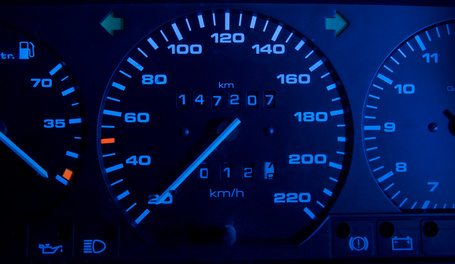
A lot can go wrong with a Chevy Malibu, due to just normal wear and tear. Checking the entire vehicle by hand can be time consuming, especially if you do not know the exact problem. There is a way to speed up the process. The Chevy Malibu is equipped with a number of diagnostic computers and sensors. These systems can provide you with a list of all the problems that have recently developed. Accessing each of these systems requires the same procedure.
Open the Chevy Malibu's driver's-side door. Take a seat behind the steering wheel and insert your key into the ignition. Start the engine. The dashboard will light up. Let the lights settle, but take notes on which warning indicating lights remain active. For example, an active "service engine soon" light means you will have to access the car's On-Board Diagnostic system. An active ABS light means you will have to check the antilock braking system.
Turn the engine and electrical system off. Leave the key in the ignition.
Find the Malibu's Data Link Connector. The DLC can be found beneath the dashboard and to the left of the steering column. No matter the system and scanner you select, the DLC is the gateway to be used. For example, OBD-II, ABS and Tire Pressure Monitoring System scanners all go through the DLC.
Attach your diagnostic scanner to the Malibu's DLC port. All scanners use a diagnostic scanner that ends in a 16-pin plug. Insert this plug into the DLC.
Switch the scanner on. Turn the key in the Malibu's ignition and bring up the car's electrical system. Some types of diagnostic hardware will also need an active engine. If you are using such a device, start the Malibu's engine.
Enter a "read" or "retrieve" command into your device. How to do this not only differs by the brand of device you use, but the system the device is intended for. Follow the exact instructions offered in your manual.
Give your device a second to interface with its intended diagnostic system. Once trouble or fault codes are displayed on your device's screen, copy them onto a separate sheet of paper.
Look up the coding definitions for each of the codes you copied. Some codes can be looked up on the manual sold with your diagnostic hardware. This information may not be complete, however. An OBD-II scanner's manual, for example, only contains basic, standard OBD-II trouble codes. General Motors has a separate set of codes. Most diagnostic codes can be easily found online.
Investigate the components specified by the codes on your list. For example, if you have OBD-II codes that indicate trouble with a specific ignition cylinder, check all of the cylinders. If you find a problem with one tire sensor, check the others as well.
Keep the problem list. Should you need to involve a mechanic, this list will defray any diagnostic fees.